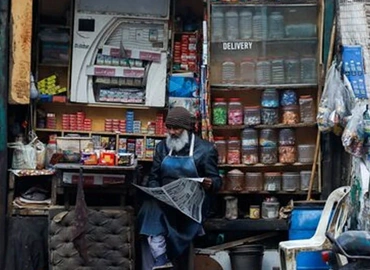Introduction
One cannot doubt the emotional attachment of the majority of Pakistanis with China. Generations of Pakistanis are bred on the belief of all-weather friendship with China. And China did prove its worth over the decades of supporting Pakistan and standing by it in hours of trial. On the economic front, Pakistan is the second country, with whom China has entered into a Free Trade Agreement (FTA). Post-FTA, China has become the largest trading partner of Pakistan, with a caveat of persistent high trade deficit suffered by Pakistan. Even without statistical evidence, one can observe presence of Chinese products ranging from high-end electronics to toiletries in large swathes of Pakistan.
We may ask a question here. Is trade with China a bane or boon for Pakistan? Reply depends on the shoe one is wearing. On a lighter note our shoe industry is among those, who are complaining of being swamped under cheap Chinese imports. As in case of any economic change, there are gainers and losers in trade with China. Our beneficiaries list includes consumers and industries using cheaper Chinese raw materials, intermediate goods and machinery. Sufferers are those industries that cannot compete for finished goods market with China pricing and quality. An influential segment in the industry is continuously raising voice for protectionism against cheaper imports. Government intervention is sought in the shape of subsidies and exemptions to protect local employment & obviously local industrialists from competition.
As a consumer, I am happy to enjoy greater range of goods with less pressure on my pocket. However, in the role of an industrialist, my heart pounds fast when I see more of my buyers shifting their preference to Chinese options. Is there any need to resolve this dilemma? Market forces are creating their own momentum, where consumer demand is determining the enhanced flow of Chinese goods. However, we, the consumers, have not lobbied for this opening up of trade with China. Indeed, we have emerged as its biggest beneficiaries. Just try a survey on the origin of home appliances in an average Pakistani household. It is the China price that has enabled a Pakistani housewife to bring more automation to her house chores.
However, our industrialists also have genuine concerns in competing with Chinese goods. There are structural issues that have raised the cost of manufacturing in Pakistan. Key issues include energy crisis, inadequate infrastructure and grim security situation. Now the question is that whether we should delay the opening up of the economy till these structural issues are resolved. Or should we allow the liberalization of economy simultaneously with the efforts of resolving structural issues? And we should remain aware of one fact that our entrepreneurs, like anywhere in the world, are smart and adaptable to market conditions. They will try their level best to resist opening up of competition, as it will hit their profit margins. In case, they cannot stop creeping competition especially from foreign companies, then they will ask for government subsidies and exemptions for protection.





